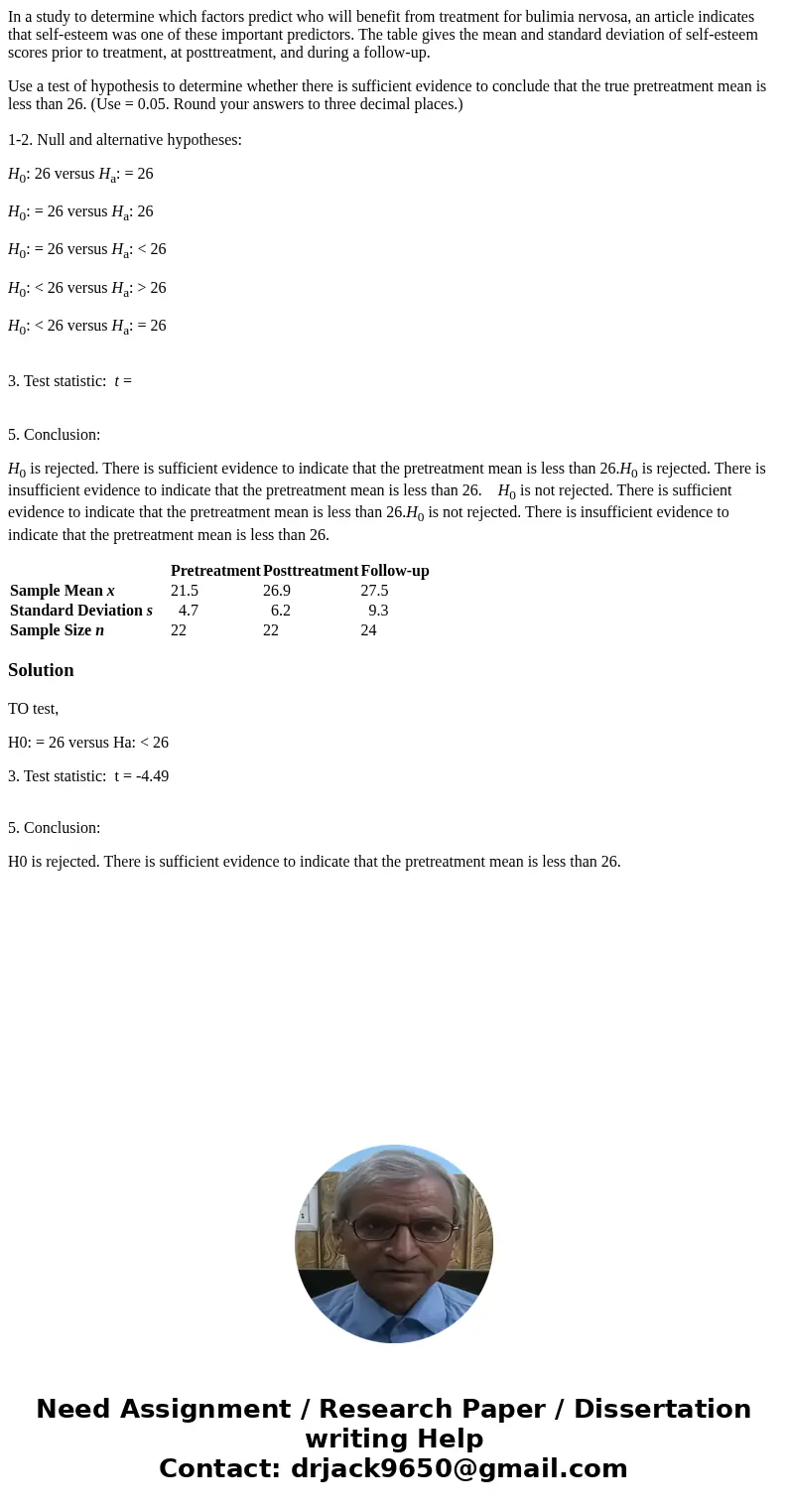In a study to determine which factors predict who will benef
In a study to determine which factors predict who will benefit from treatment for bulimia nervosa, an article indicates that self-esteem was one of these important predictors. The table gives the mean and standard deviation of self-esteem scores prior to treatment, at posttreatment, and during a follow-up.
Use a test of hypothesis to determine whether there is sufficient evidence to conclude that the true pretreatment mean is less than 26. (Use = 0.05. Round your answers to three decimal places.)
1-2. Null and alternative hypotheses:
H0: 26 versus Ha: = 26
H0: = 26 versus Ha: 26
H0: = 26 versus Ha: < 26
H0: < 26 versus Ha: > 26
H0: < 26 versus Ha: = 26
3. Test statistic: t =
5. Conclusion:
H0 is rejected. There is sufficient evidence to indicate that the pretreatment mean is less than 26.H0 is rejected. There is insufficient evidence to indicate that the pretreatment mean is less than 26. H0 is not rejected. There is sufficient evidence to indicate that the pretreatment mean is less than 26.H0 is not rejected. There is insufficient evidence to indicate that the pretreatment mean is less than 26.
| Pretreatment | Posttreatment | Follow-up | |
| Sample Mean x | 21.5 | 26.9 | 27.5 |
| Standard Deviation s | 4.7 | 6.2 | 9.3 |
| Sample Size n | 22 | 22 | 24 |
Solution
TO test,
H0: = 26 versus Ha: < 26
3. Test statistic: t = -4.49
5. Conclusion:
H0 is rejected. There is sufficient evidence to indicate that the pretreatment mean is less than 26.

 Homework Sourse
Homework Sourse